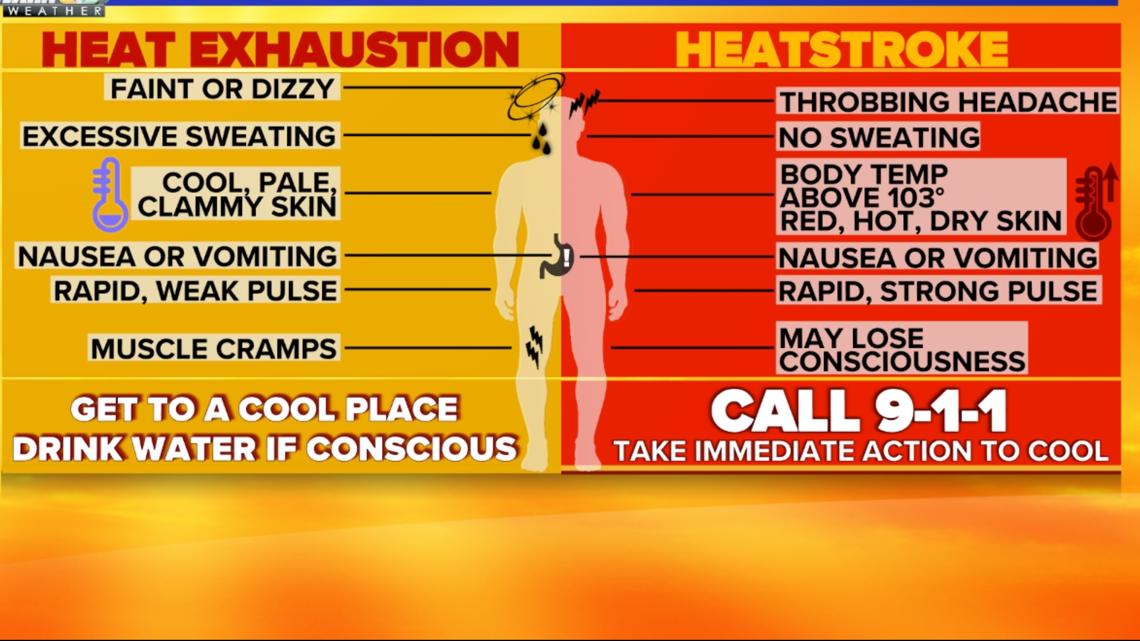CHARLOTTE, N.C. — As the days become longer and hotter with summer fast approaching, South Carolina is changing the criteria for issuing heat alerts.
In conjunction with the state's Heat Safety Week, the National Weather Service (NWS) is explaining newly lowered thresholds for heat-related advisories, watches, and warnings. The change impacts many South Carolina residents starting this summer.
This change stems from the frequency of extremely hot days with triple-digit heat. Heat causes the most weather-related deaths, according to the National Weather Service. That's one of the reasons why the NWS is looking to make people more aware of potentially dangerous heat.
From a historical perspective and climate data, the Carolinas are not estranged from heat waves. Beating the heat in the Southeast each summer is tough due to both hot temperatures and high humidity. This combination, often referred to as the heat index, becomes difficult for the body to cool itself.
For many South Carolina residents, including those in Lancaster and Chesterfield counties, the National Weather Service criteria for issuing heat alerts has been revised to:
- Heat Advisory: Heat index of 108-to-112 degrees for at least 2 hours or more.
- Excessive Heat Watch: Heat index of 113 degrees or higher is favorable in the next 24 to 72 hours.
- Excessive Heat Warning: Heat index of 113 degrees or higher for at least 2 hours or more.
The temperatures in the updated criteria are two degrees lower than in previous years.
It's not the first time the criteria have changed. In previous years, the temperatures were raised to reduce the frequency of alerts. However, given the health-related impacts seen from extreme heat, officials decided to once again lower the criteria.
"There were seeing more instances of heat-related illnesses at lower thresholds" Melissa Griffin, the South Carolina assistant state climatologist, explained. "When they went back and looked at the advisories and watch and warning criteria what they found was those thresholds were a little too high to alert people that there was the potential for this heat exposure.”
Elsewhere in South Carolina, including in York County, and throughout much of North Carolina, the threshold remains unchanged at already lower levels:
- Heat Advisory: Heat index of 105-to-109 degrees for at least 2 hours or more.
- Excessive Heat Watch: Heat index of 110 degrees or higher is favorable in the next 24 to 72 hours.
- Excessive Heat Warning: Heat index of 110 degrees or higher for at least 2 hours or more.
These numbers impact when heat-related alerts appear on your television screen or in your weather apps.
However, the bottom line remains unchanged. June, July and August are the hottest months of the year. It is very important precautions are taken to protect against heat-related impacts on the body.
"Wear light-weight clothing, limit your sun exposure, make sure you’re wearing sunscreen," Griffin suggested as ways prevent heat-related issues.


Heat cramps can be the first sign of heat-related illness and could lead to heat exhaustion or heat stroke. Heatstroke can be life-threatening and requires immediate medical attention.
Stay cool, stay hydrated, and stay informed. Be sure to take extra precautions especially early in the season when people are less acclimated to sudden spikes in temperatures.
Contact KJ Jacobs at kjacobs3@wcnc.com and follow him on Facebook, X and Instagram.
WCNC Charlotte’s Weather IQ YouTube channel gives detailed explainers from the WCNC Charlotte weather meteorologists to help you learn and understand weather, climate and science. Watch previous stories where you can raise your Weather IQ in the YouTube playlist below and subscribe to get updated when new videos are uploaded.

